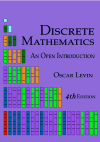Print preview
Worksheet Preview Activity
(b)
We can also compute the total number of dots by summing each “hook” region, from smallest to largest:
+ + + + + .
(c)
Yet another way to calculate the total number of dots is to group the terms of this sum.
Since there are three pairs of sums, the total is
(d)
If we generalize the diagram, so it has
How many dots will be in the second largest hook?
(e)
What will the sum of the smallest and largest hooks be?
What will the sum of the second smallest and second largest hooks be?
(f)
If we continue adding pairs of hooks (next smallest plus next largest), how many pairs will we have?
Multiplying then, the total number of dots will be: .


